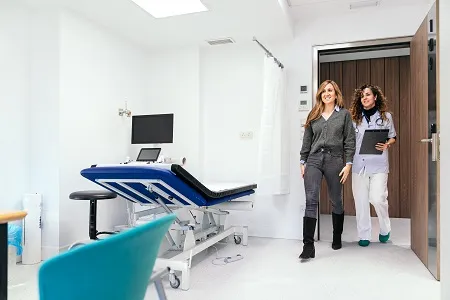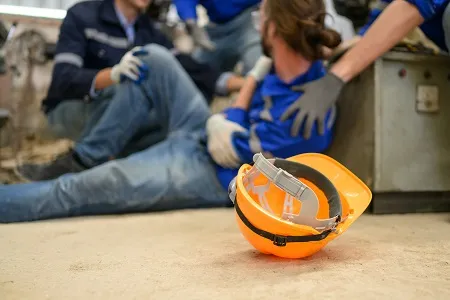How to Avoid Occupational Hazards in the Healthcare Industry
The healthcare and welfare services industry is the highest employer in Australia as it represents 12% of the workforce. According to the Australian Institute of Health and Welfare, the industry employs more than one million people. These numbers are expected to grow as the Australian population grows and ages. The healthcare industry also reports the highest number of work-related illnesses and injuries every year.
Healthcare injuries and fatalities in numbers
According to Safe Work Australia:-
- Since 2003, the healthcare industry has reported more than 35 fatalities
- The healthcare industry accounts for 16% of the total number of workers’ compensation claims. This is the highest percentage compared to other industries.
Common safety hazards in the healthcare industry
As there are various occupations in the healthcare industry, workers are exposed to different hazards. For instance, nurses and doctors are exposed to such safety risks as exposure to infectious diseases, toxins, radiation, back injuries and stress. Housekeepers are exposed to injuries from improperly discarded needles, irritation from cleaners and disinfectants, and so on. People who carry out maintenance tasks in a hospital setting are exposed to risks such as exposure to asbestos, solvents and electrical hazards.
These range of healthcare hazards can be classified into four main categories. These include:
- Physical hazards
- Ergonomic hazards
- Exposure to hazardous agents, and
- Psychological hazards
- Physical hazards
These include injuries resulting from reactive, corrosive, toxic, or flammable chemicals or gases. Physical injuries can also result from extreme temperatures which cause heat stress or burns, lacerations, abrasions slips and falls, radiation, violence from aggressive patients, electrical hazards and noise.
In order to counter physical hazards in a hospital setting, healthcare workers need to be trained on such things as:-
- The need to store gases and chemicals properly
- Wear appropriate personal protective equipment (PPE) including hearing protection when it’s necessary
- The need to keep out of restricted radiation areas
- How to treat and interview aggressive patients
- Incident reporting procedures
- The need to maintain clean and spill-free floors. Healthcare workers should be sensitised on the need to report spillages immediately they happen
- Ergonomic hazards
Ergonomic hazards result from repetitive motion, poor lifting techniques, eye strain due to poor lighting, and standing for extended periods. Safe Work Australia does not lay down specific rules when it comes to ergonomics in a healthcare setting. As such, healthcare employers may minimise ergonomic hazards by:
- Begin a no-lift program by providing lifting equipment such as sliding boards, shower chairs, lateral transfer devices, wheelchairs, gain belts which have handles, and repositioning devices, among others. They could also encourage team lifting
- Regularly maintain lifting devices
- Provide convenient storage areas
- Provide ergonomic computer workstations, containers, and surgical instruments
- Encourage regular exercise
- Healthcare workers should also be taught on practices that will help them avoid awkward postures

- Exposure to hazardous agents
These include chemicals, biological agents such as disease-causing germs and pathogens, disinfectants, anesthetic gases, antibiotics, latex gloves, and hazardous waste. Unfortunately, these safety hazards affect healthcare workers in every sector including the lab, operating rooms, housekeeping, those in radiology, and even office areas.
Healthcare workers need thorough training on safe work practices as well as the exposure control plan. Workers should be trained on such aspects as:-
- The need to keep hazardous agents labelled and how to identify hazardous ingredients
- The need to wear PPE including respirators when handling hazardous chemicals or gases
- How dispose of hazardous agents safely
- How to identify symptoms of illnesses resulting from exposure to hazardous agents
- The location of emergency stations
- Psychological hazards
Healthcare workers are exposed to psychological hazards resulting from such factors as patient death, demanding or dependent patients, overwork, tight work schedules, bureaucracy, discrimination, technological changes, and malfunctioning equipment. All these results in stress, anger, and fatigue. Healthcare workers are also predisposed to feelings of powerlessness and isolation.
Failure to identify and treat the stress sources could lead to worker burnout. Healthcare workers that are most likely to experience severe workplace stress are those who work in emergency rooms, theatres, burn units and intensive care units. In order to minimise psychological hazards, health facilities should:
- Hold regular meetings where workers can share their feelings or innovative ideas
- Hold stress management programs including readily available counselling for stressed workers
- Be flexible when it comes to worker scheduling
- Ensure appropriate worker rotation
- Ensure adequate staffing as well as an organized working environment
How Induct for Work helps healthcare facilities
Compared to other industries, having well-trained and confident staff is critical for the healthcare industry. Induct for Work is an intuitive online induction platform through which you can induct healthcare workers in your facility. Proper induction leads to better co-operation, productivity, and motivation.
Medical Online Inductions
You can upload your own online induction courses to Induct for Work covering hospital safety, patient safety, and equipment safety among others. All these are designed to make the induction process less time-consuming and strenuous on the inductees as they can take them at their pace. Some of the features that make this the go-to induction tool include:-
- Use your own existing content or have your online induction created by one of our WHS Specialists.
- Induct for Work is mobile compatible. This allows inductees to access the induction material from anywhere and through smartphones, personal computers, and desktops
- Content is multi-media rich and includes section assessments which enable you to gauge the inductee’s comprehension level. You can set minimum assessment requirements. Inductees who do not score the minimum requirement should retake the induction. Such assessments also make learning more engaging.
- You can track inductees’ progress through quizzes. The platform also enables you to set a course completion date.
- The content is always online, thus, the employees can access it from anywhere where internet access is available.
- The platform allows you to acknowledge the inductees’ job readiness by generating completion certificates. You and your users will be notified when these certificates are due for renewal.
Are you ready to induct your healthcare workers? Feel free to sign up for a free online induction trial account here today!
Do you have any questions or great tips to share?
Induct for Work – the only online induction system you would need to run online inductions.



